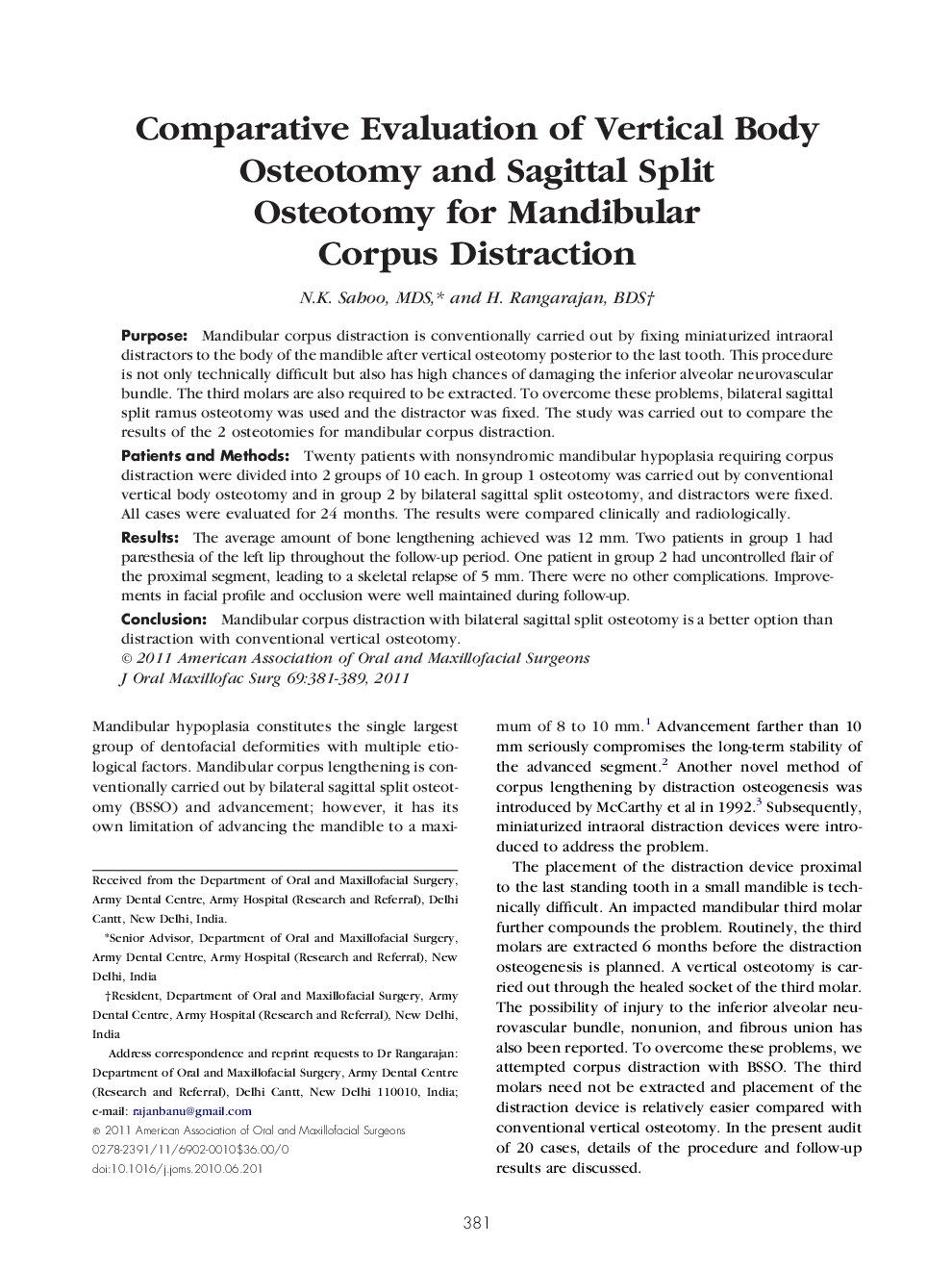| Article ID | Journal | Published Year | Pages | File Type |
|---|---|---|---|---|
| 3153516 | Journal of Oral and Maxillofacial Surgery | 2011 | 9 Pages |
PurposeMandibular corpus distraction is conventionally carried out by fixing miniaturized intraoral distractors to the body of the mandible after vertical osteotomy posterior to the last tooth. This procedure is not only technically difficult but also has high chances of damaging the inferior alveolar neurovascular bundle. The third molars are also required to be extracted. To overcome these problems, bilateral sagittal split ramus osteotomy was used and the distractor was fixed. The study was carried out to compare the results of the 2 osteotomies for mandibular corpus distraction.Patients and MethodsTwenty patients with nonsyndromic mandibular hypoplasia requiring corpus distraction were divided into 2 groups of 10 each. In group 1 osteotomy was carried out by conventional vertical body osteotomy and in group 2 by bilateral sagittal split osteotomy, and distractors were fixed. All cases were evaluated for 24 months. The results were compared clinically and radiologically.ResultsThe average amount of bone lengthening achieved was 12 mm. Two patients in group 1 had paresthesia of the left lip throughout the follow-up period. One patient in group 2 had uncontrolled flair of the proximal segment, leading to a skeletal relapse of 5 mm. There were no other complications. Improvements in facial profile and occlusion were well maintained during follow-up.ConclusionMandibular corpus distraction with bilateral sagittal split osteotomy is a better option than distraction with conventional vertical osteotomy.
